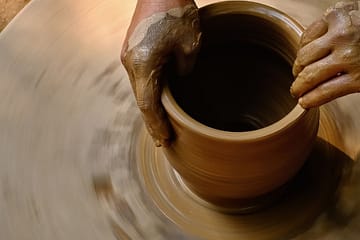For the past few weeks my heart has been powerfully stirred by the indigenous-led effort to protect the water, our shared water, from the Dakota Access Pipeline.
The people at Standing Rock who are blocking the construction of an oil pipeline under the Cannonball River (before crossing many other rivers) are calling themselves protectors, not protesters. They are acting out of a profound love and sense of interconnection with place and culture. This love has given them the courage to take on a formidable fight against big oil.
This is a moment in history where we can clearly see the conflict between those who have a sacred relationship with place and those who relate to the earth simply as a deposit of resources to be extracted. It’s consumption vs. regeneration.
In her recent book about capitalism and the climate, Naomi Klein emphasizes that transforming our extractivist relationship to the earth is fundamental to changing our economy and protecting the regenerative capacity of the earth.
So how do we develop this sacred and regenerative relationship with the earth? Many of us know how restorative it is to spend some time in nature. Here are some thoughts about what can help us deepen that relationship.
 Learn from nature, not about nature
Learn from nature, not about nature
This is the big shift – to allow nature to speak to us through the many voices of the creatures, water, and earth. Next time you feel stuck on a decision or problem, try going for a walk. Before you begin, ask for help from the natural world with your question. Relax and enjoy your walk. Be willing to be surprised.
Embody another point of view
We can get to know the world around us by practicing seeing the world from the point of view of a tree, a river, or a bird. For example, the children at All in the Circle Camp learned about birds by becoming them. They built nests out of sticks and mud. They climbed high towers for a bird’s eye view and rode zip lines. They made bird puppets and I taught them how to move as birds.
Grownups also benefit from playful explorations such as standing like trees, sitting like a mountain, or flowing like water. Each time we have an experience of feeling like we are the woods or we are the water, the closer we are moving towards a new understanding ourselves as part of the whole.
Use symbol and ritual to tune into the regenerative cycle of life
For example honoring the directions tunes us to the rising of the sun, the heat of the day, the setting sun and the rest of night. Connecting with the elements is another way of experiencing this cycle. Or marking the changing of the seasons. These cycles teach us about the rhythm of activity and rest, death and resurrection.
Give it practice, time, and community
Building any relationship takes time and commitment. Creating a powerful relationship with the landscape and creatures requires us to develop new communication skills and that also takes practice. I’ll also say you need community to be encouraged onward so that even if you are diving in deep you don’t feel like you’ve “gone off the deep end.â€
The best part of being in deep relationship with the natural world is that you are no longer alone. Feeling isolated and alone may be one of the greatest causes of suffering in our world. And the antidote, deep belonging, is so joyful and healing. No wonder humans have been dancing about it since ancient times.
What’s your next step towards a deeper relationship with nature?
Emily
Want to learn more about the situation in Standing Rock?
This article in YES! Magazine gives the history of the camp, this is a good video about the money and politics behind pipelines, and this is a summary of the legal situation. Here is the link to donate to the Sacred Stone Camp.


